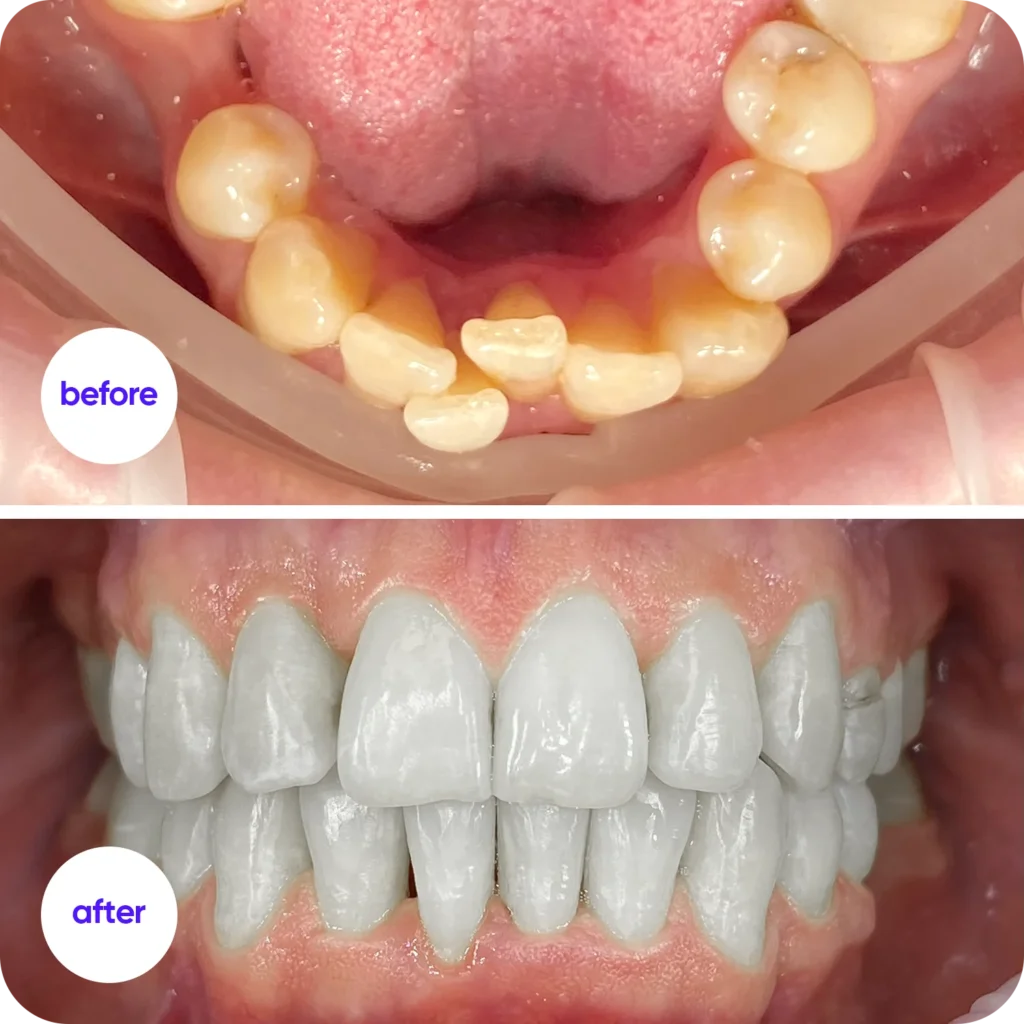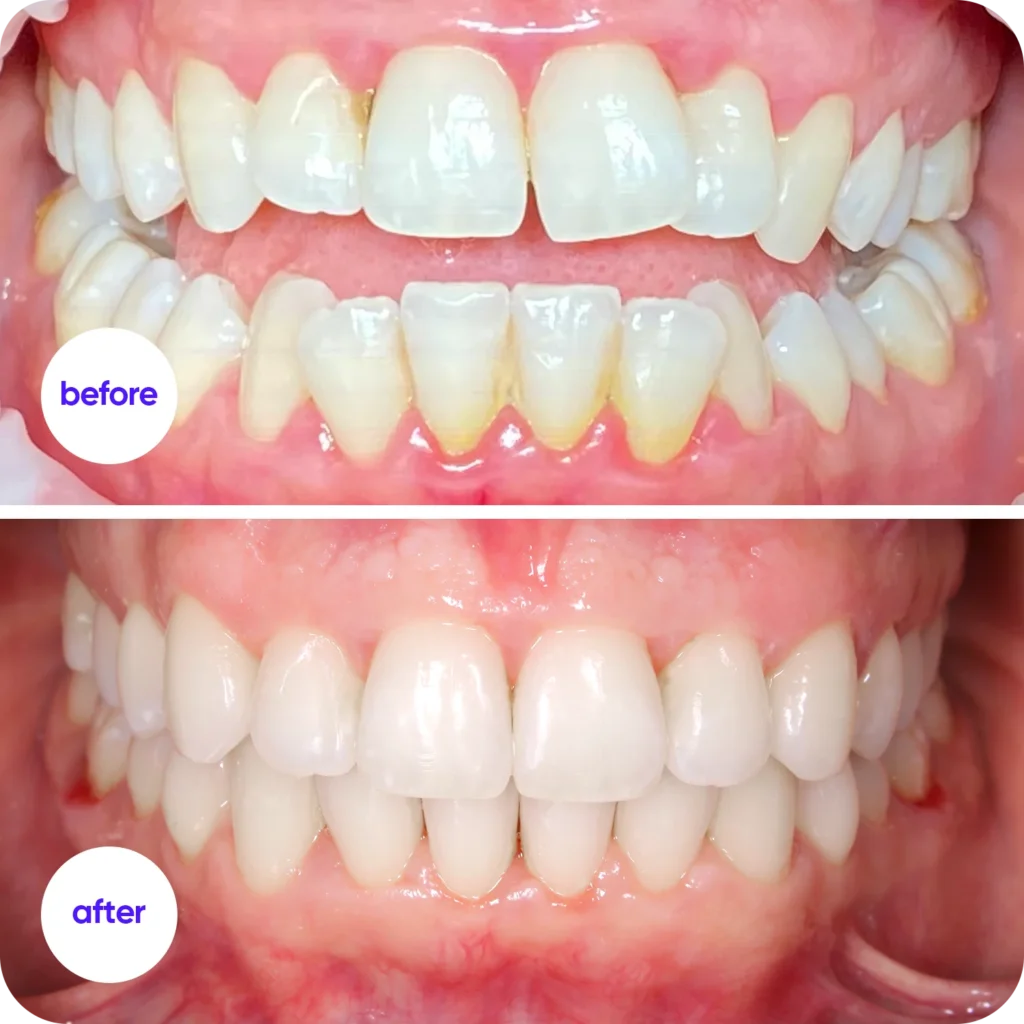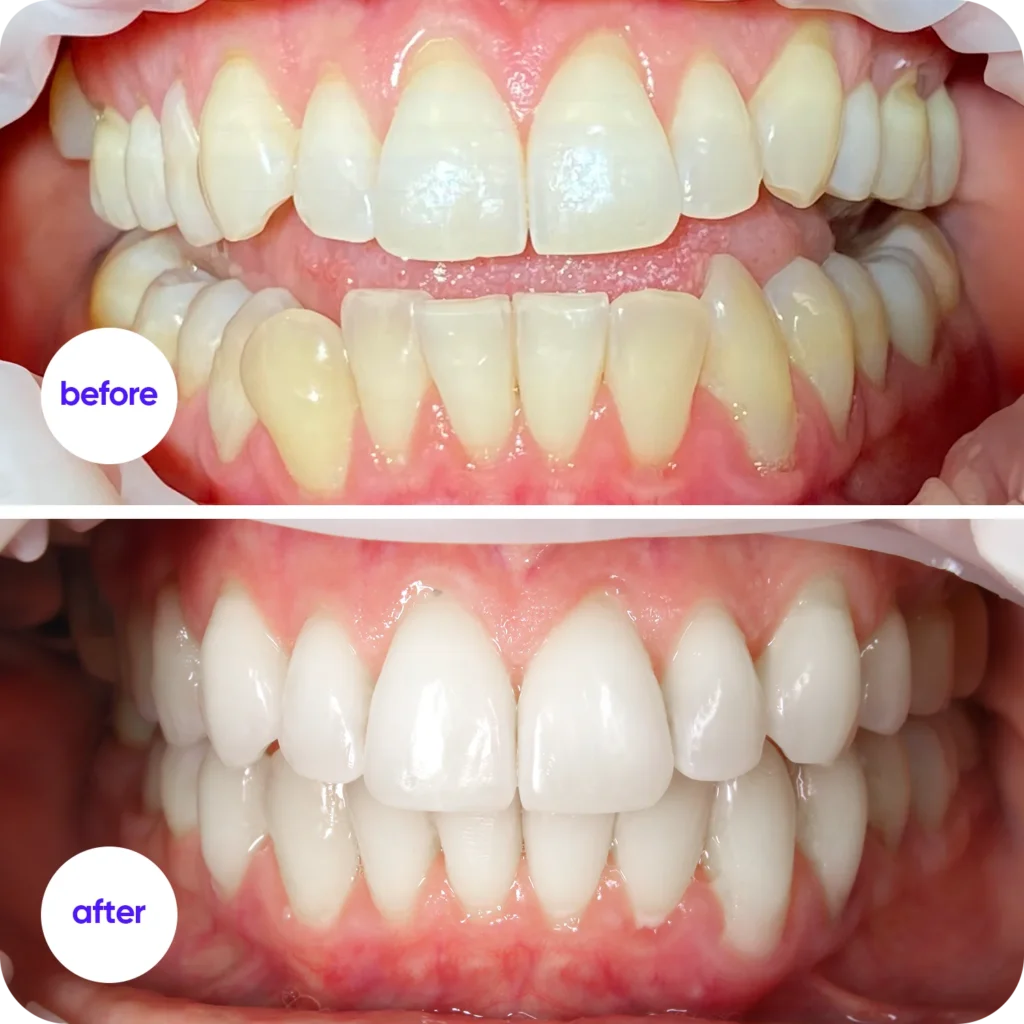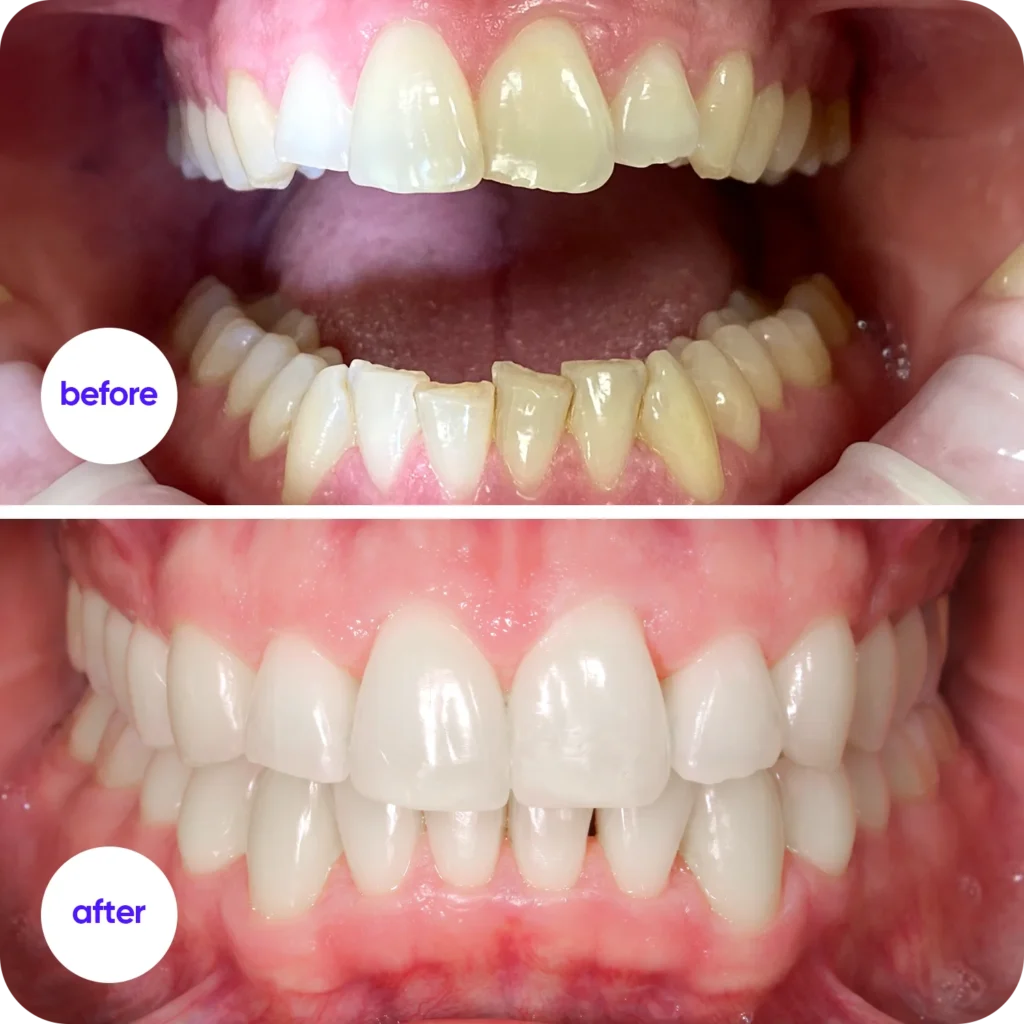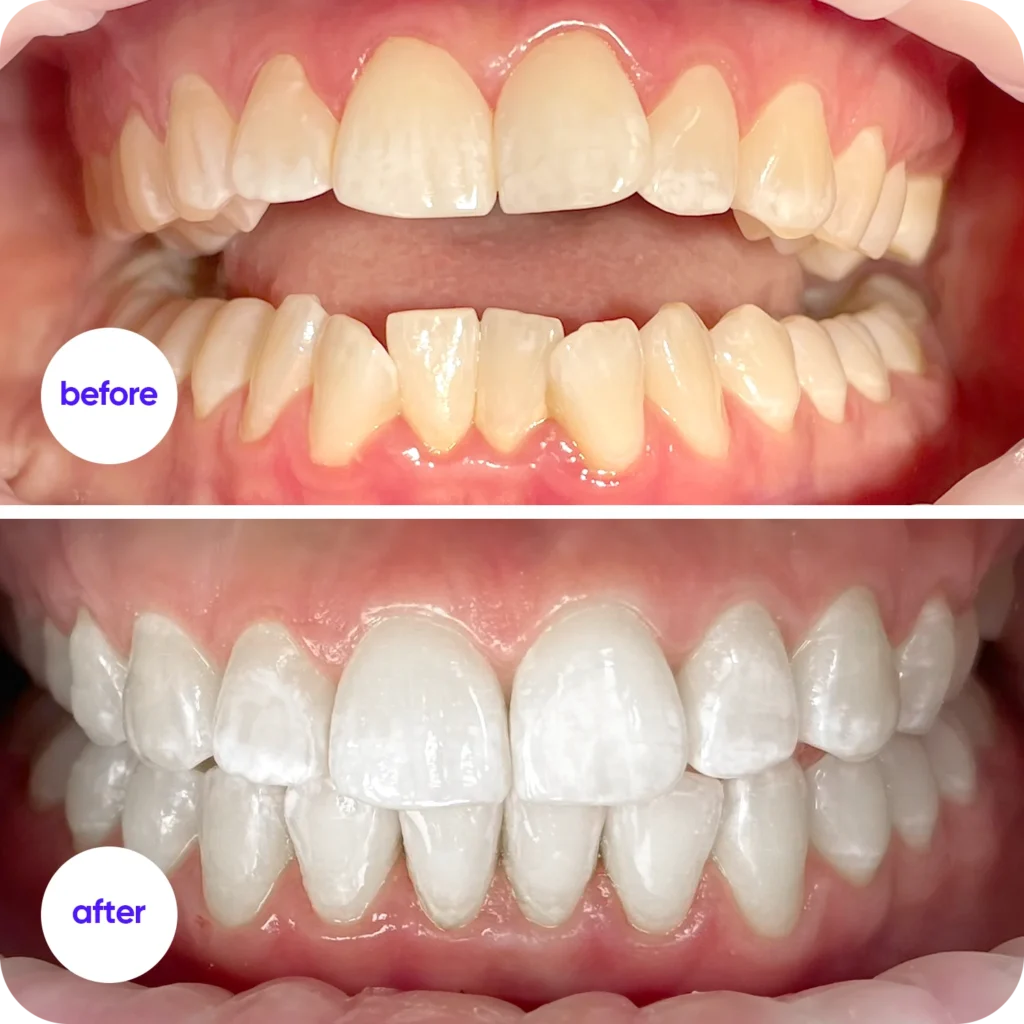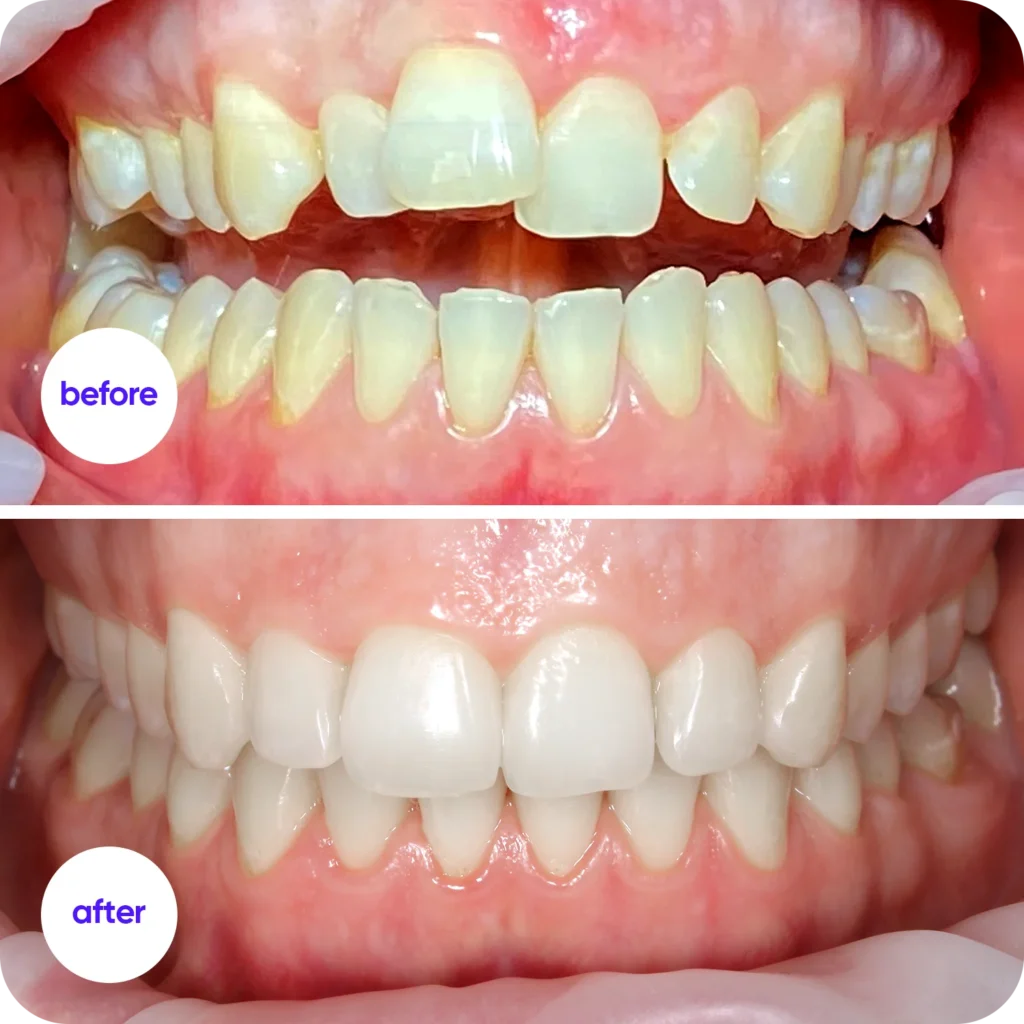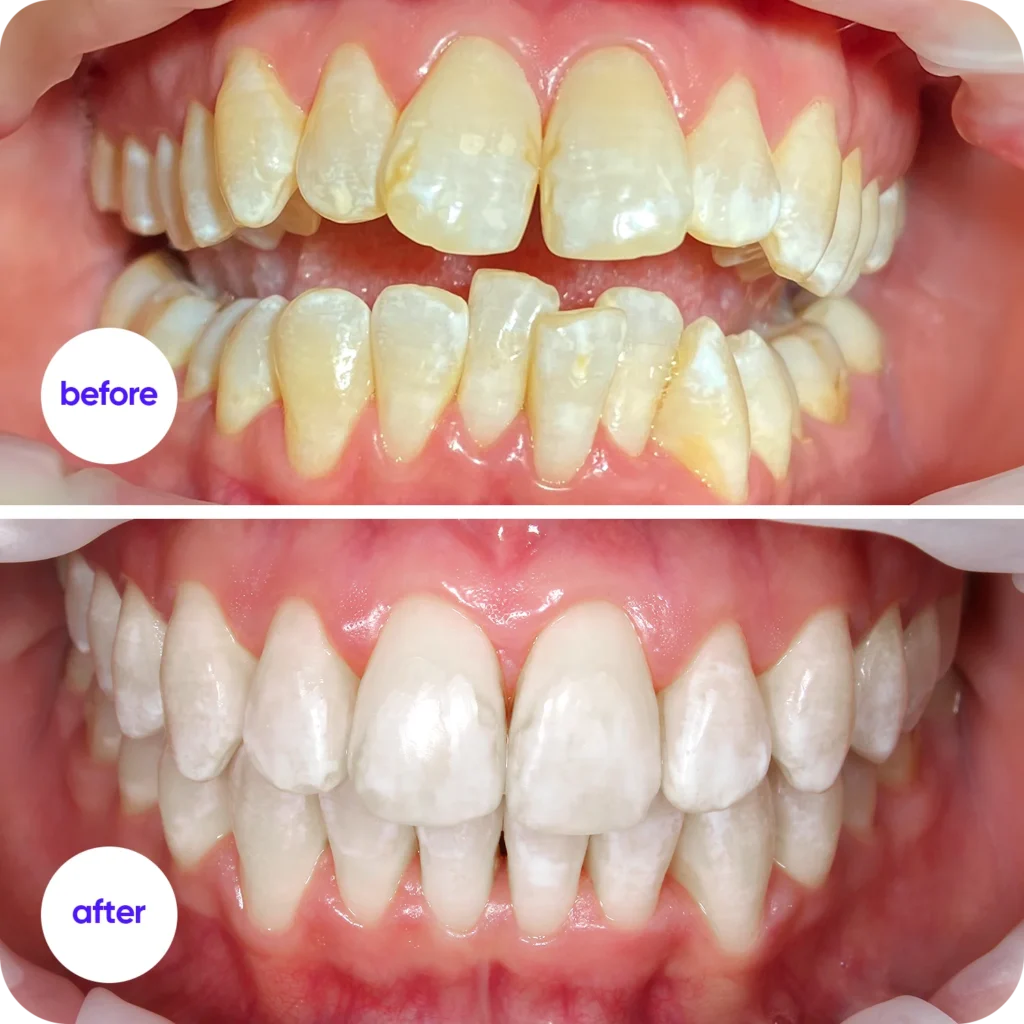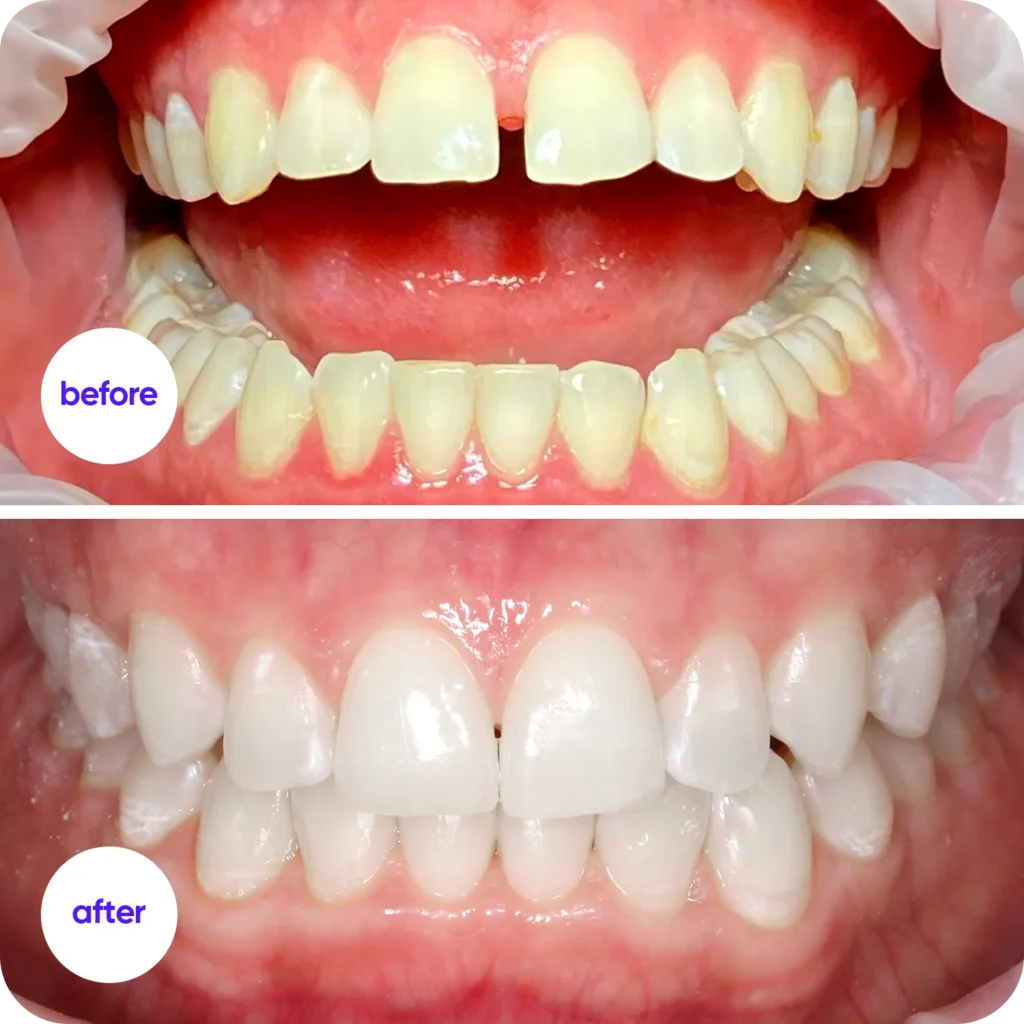Straighten teeth without braces
Aligner treatment is an aesthetic, natural and fast method for straightening teeth

- Price €2000–4500
- Results from six months
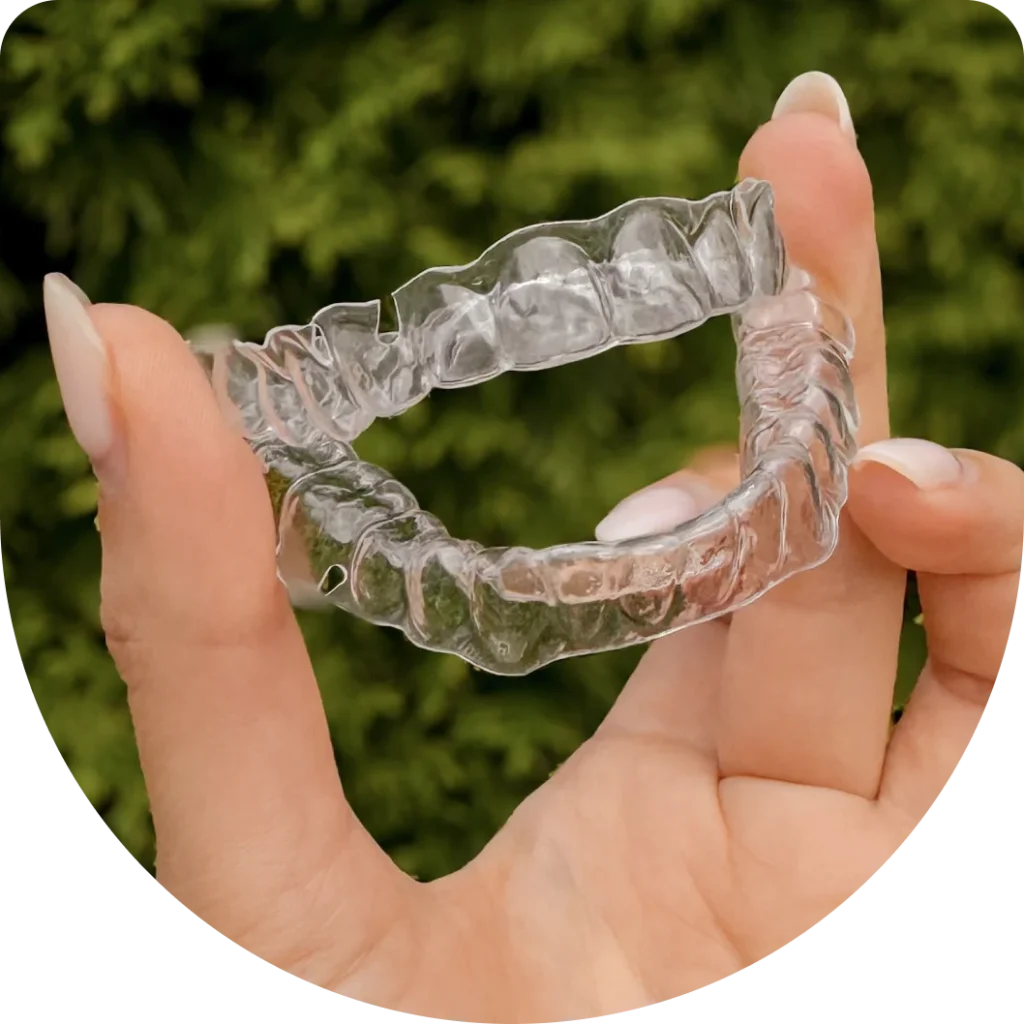
What is orthodontic aligner treatment?
The aligners are free of BPAs and nearly invisible and can be independently removed for eating and drinking.
You can see the end result before starting the treatment
You will receive specific instructional guidelines and a comprehensive description of the visits and treatment process. Treatment with aligners will only be successful if you follow the instructions carefully. The most important factor is your own motivation and maintaining good oral hygiene.

Almost all bite problems can be corrected with aligners. Even those that previously would have been difficult to treat with braces.
You can undergo aligner treatment without changing any of your daily habits. The aligners are removable, so you can eat and drink as you wish.
Aligner treatment is based on scientific research carried out by doctors, scientists and orthodontists. This ensures the highest possible quality of care.
The treatment can be completed in a shorter time and with fewer visits compared to braces, saving you both time and money.
Aligners are suitable for anyone who understands how they work and is able to correctly follow the instructions for treatment success.
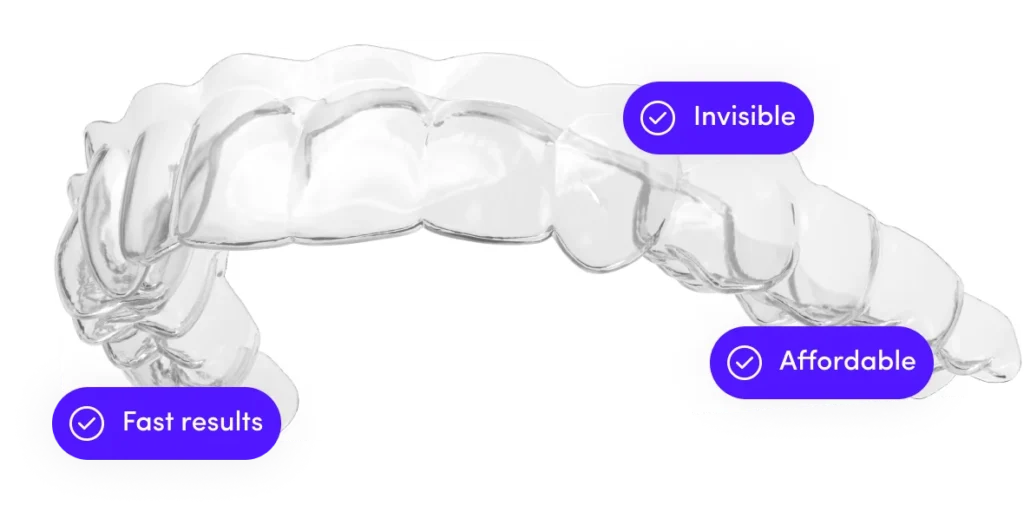
Aligners vs braces
Aligners
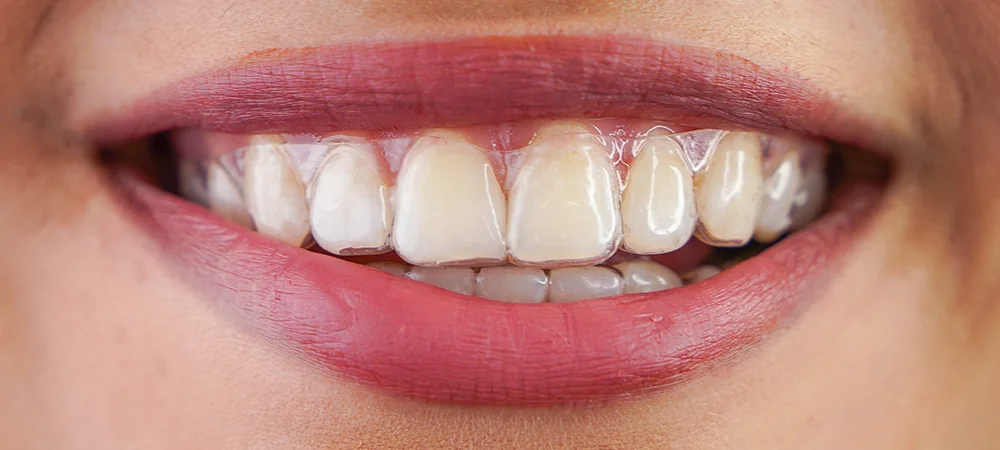
Do not interfere with daily life
Are transparent, comfortable, painless and removable at any time
Do not affect oral hygiene
Are easily removable, allowing you to brush your teeth at any time
Require fewer doctor visits (emergencies are rare)
Require visits every 5-7 months
Duration of aligner treatment
6–18 months
Cost of aligner treatment
€ 2000–4500 (the price is fixed and will not increase)
Braces
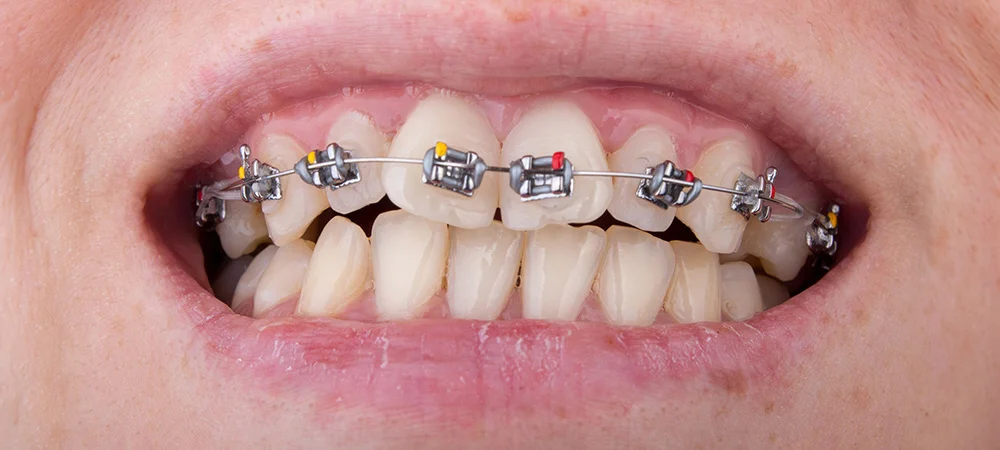
Can interfere with daily life
Are non-removable, can rub on the gums and cause sores
Make it difficult to brush your teeth
Can cause tartar to build up around the braces
Require more visits (often require emergency visits)
Require regular monthly check-ups
Duration of braces treatment
12–30 months
Cost of braces treatment
€3000–6000 (the price can increase)
We can solve 99.5% of orthodontic cases.
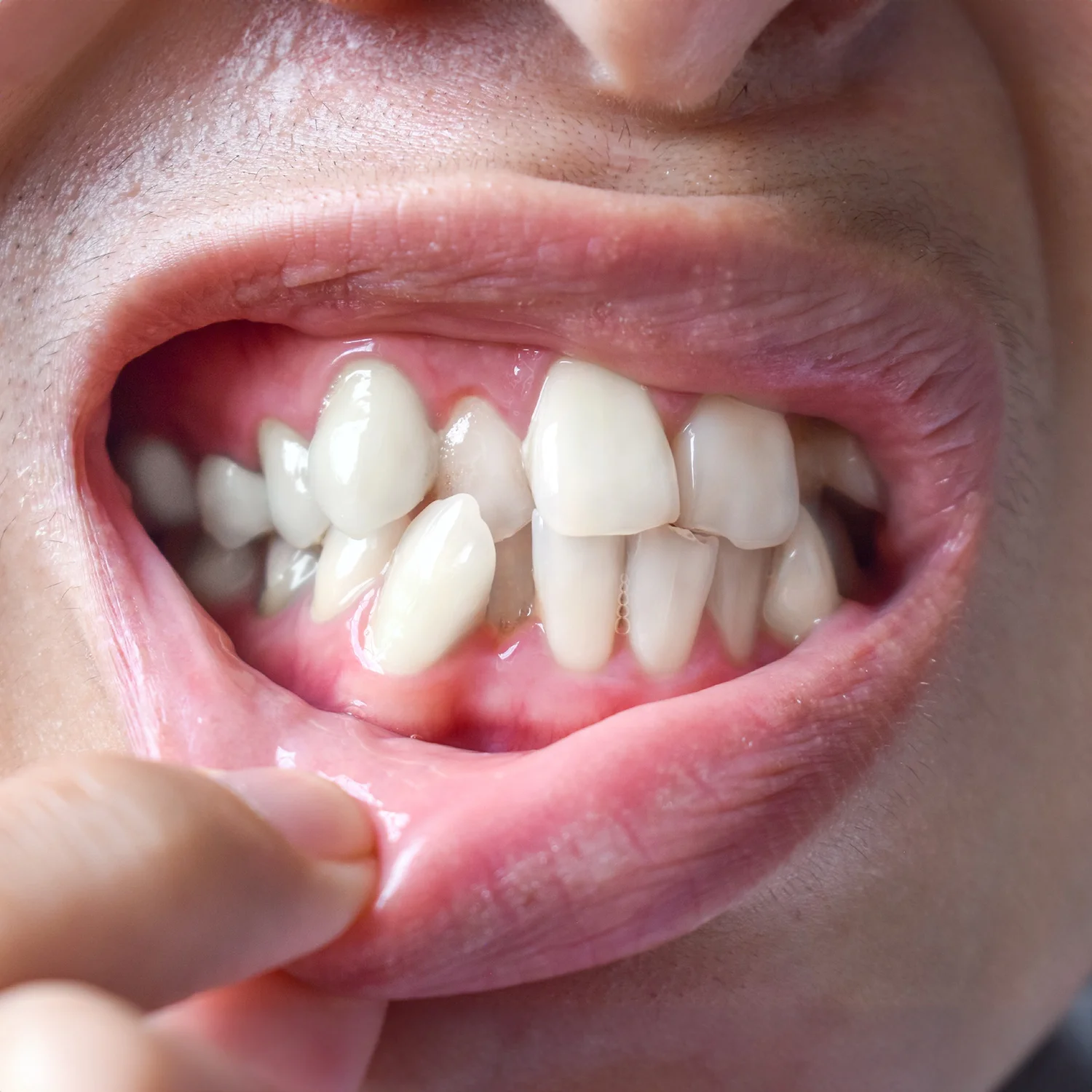
Crossbite
Crossbite is one of the most common bite problems, where one or more lower teeth are positioned outside the upper teeth.

Crowding
When there isn’t enough space for teeth in the jaw or when the teeth are too large for the jaw, the teeth to overlap and ‘pile up’.
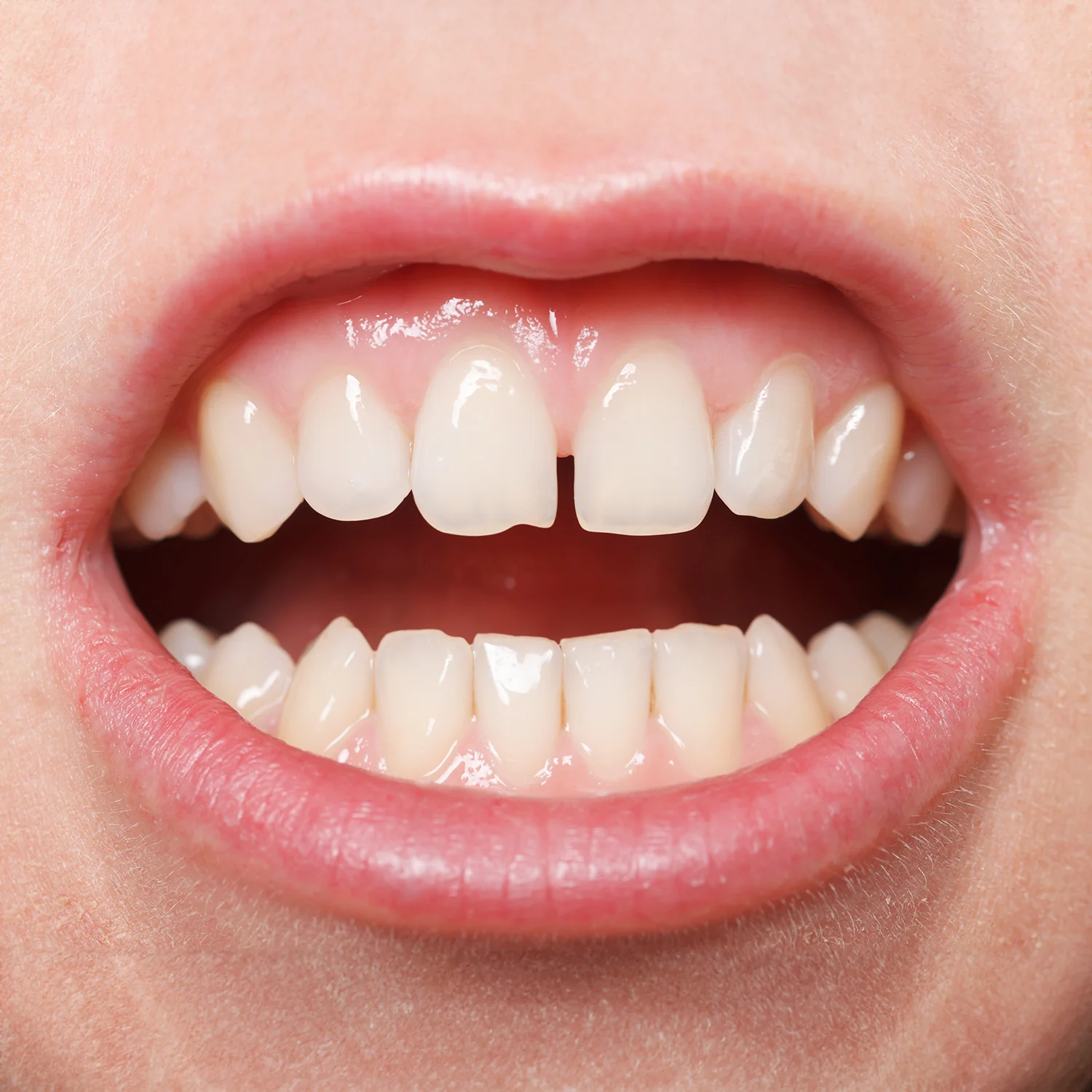
Spacing
Known medically as diastema, a gap between the teeth is an issue for many people. There is excessive space between the teeth. Can occur in both the upper and lower jaw.
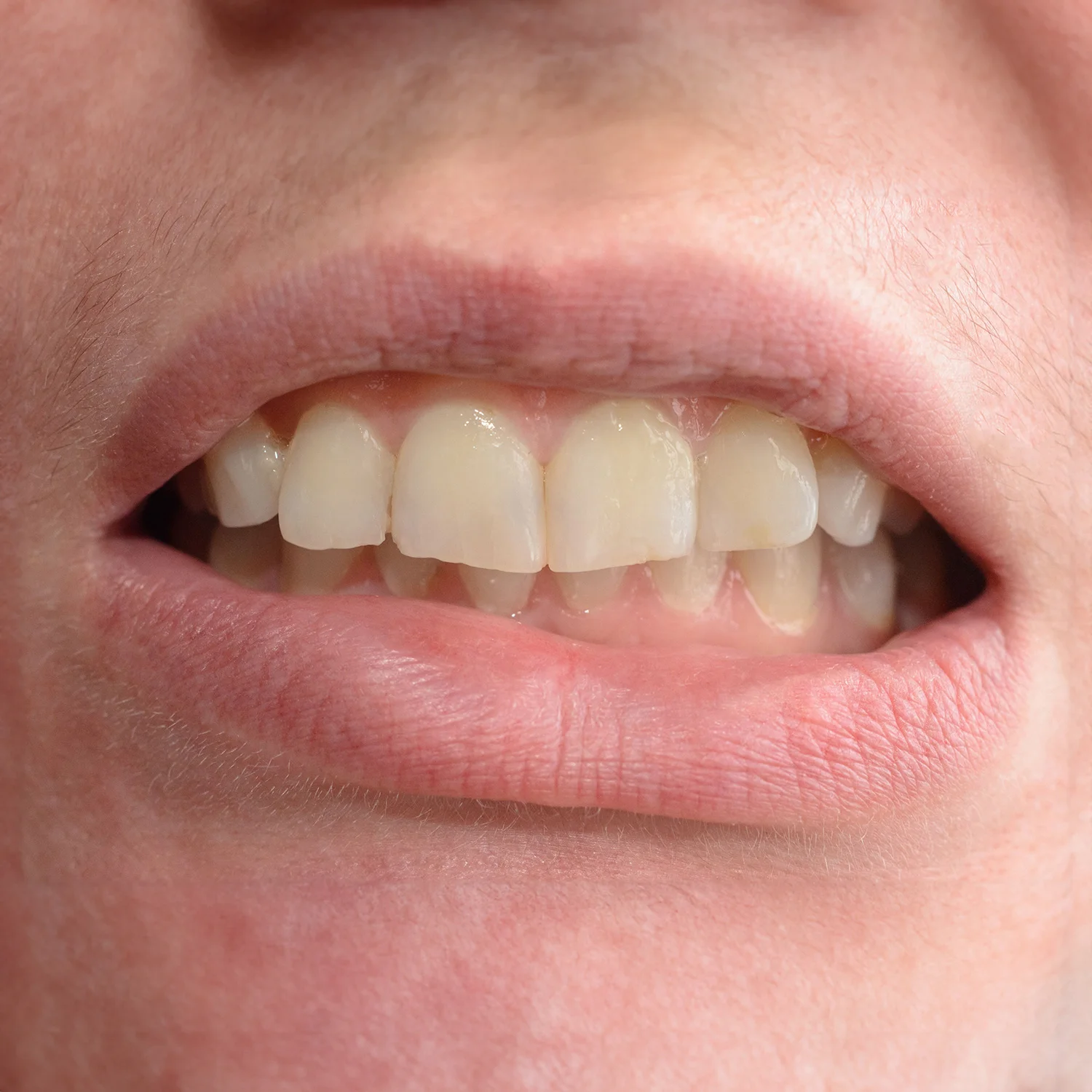
Deep bite
The upper jaw is positioned significantly in front of the lower jaw. The lower teeth extend to the gums behind the upper teeth. This causes the upper teeth to nearly fully cover the lower teeth.
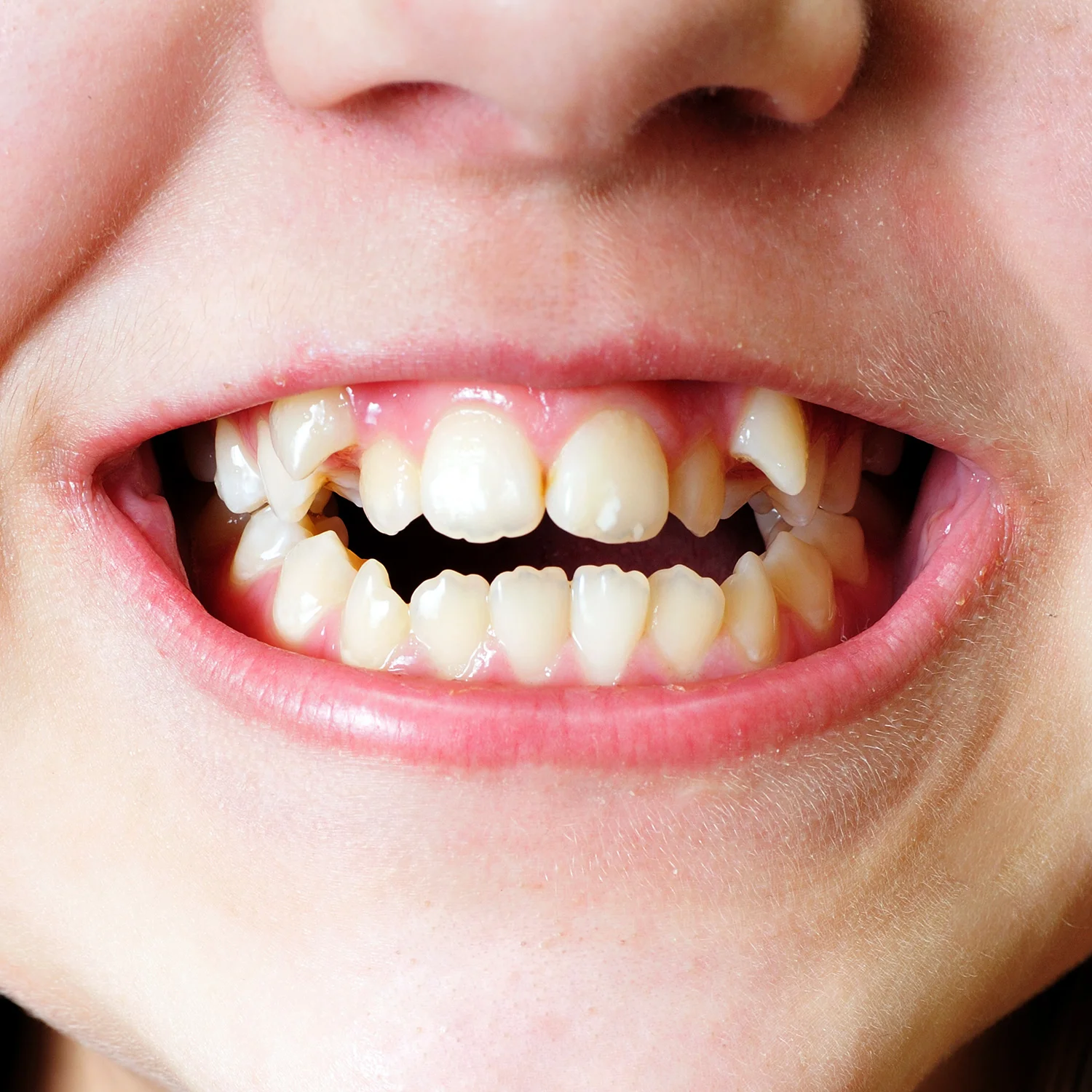
Open bite
An open space between the upper and lower teeth that created a visible gap between the upper and lower jaw.
1000+ satisfied patients
How does the treatment process look like?
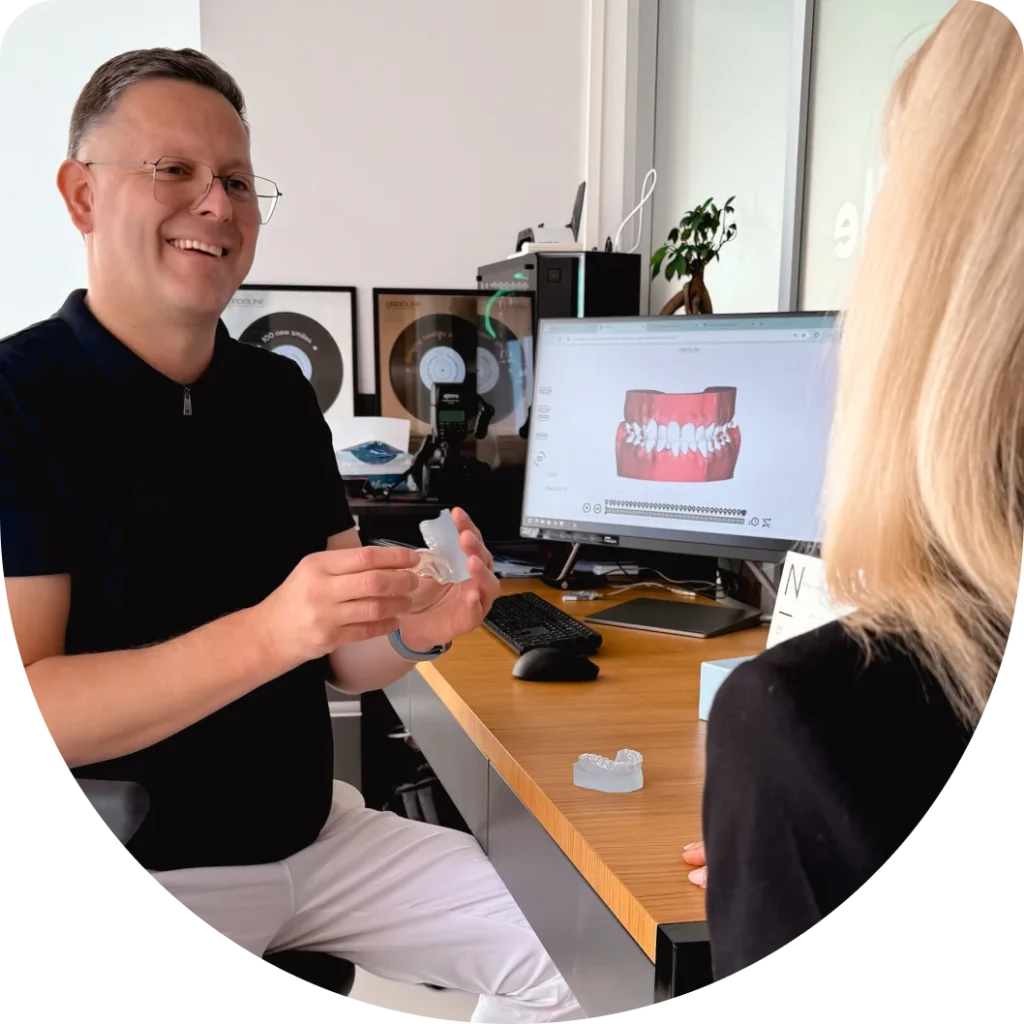




At the initial consultation, I will give you all the information you need about the nature of the treatment and its possibilities, suitability, duration and cost, so you can decide if aligner treatment is right for you.
The detailed treatment plan shows you how the position of your teeth will change with each aligner and what the final outcome will look like, so you know how the treatment will go before you start.
If the treatment plan is suitable, we will order the aligners, which usually arrive within a few weeks. At the same visit, I’ll also give you all the instructions you need to manage the aligners on your own.
Visits during treatment will be scheduled according to the treatment plan and depending on its progress. We will agree on these as we go.
We will stop aligning the teeth when we have achieved the expected final outcome. At the end of the treatment, you will receive retainers to maintain the outcome passively with continued use at night.
Payment options for aligner treatment
Payment by invoice
Affordable instalment plans
Who is Dr Kalle?
He has successfully resolved over 1000 orthodontic cases and is known for his success in handling more complex cases. He has extensive experience in general dentistry, having focused on digitalising dental care in Helsinki for many years in collaboration with specialists from the University of Helsinki.
Sven Kalle is a dentist who is breaking down the norms of dental care and setting a new standard for health. What is unique about his approach is that he prioritises prevention and addresses the root causes of symptoms, going beyond the outdated ‘one-size-fits-all’ model of dental care.

Every question matters
Depending on the number of aligners and whether one or both arches are treated, the cost ranges from €2000–4500. However, based on my experience so far, most cases require treating both arches with an average cost of €3500.
Our clinic is not a partner of the Health Insurance Fund, but payment is made in instalments so that you can spread out your expenses. The first half of the payment is due when the treatment plan is confirmed and the second when the treatment starts.
You can also pay using the affordable Inbank instalment plan with an annual interest rate of 9%. You can sign a contract directly through the ‘treatment financing’ section of Dr Kalle’s website.
Aligners are designed for people of all ages and are suitable for anyone who understands how they work and can follow the instructions correctly for treatment success.
Aligners are also suitable for children once their teeth have begun to change. However, I typically address such issues in children with myofunctional therapy. The best time for this is generally during the active growth phase between the ages of six and ten.
Aligner treatment has gained the most popularity among other orthodontic devices due to its aesthetic, discreet, precise, fast, painless and comfortable treatment process.
Aligners are made of BPA-free transparent medical-grade plastic, custom-made to your teeth and gum line to ensure maximum treatment progress and avoid tissue irritation.
You need to wear the aligners for at least 22 hours a day. Based on experience, I can say that the vast majority of people will need to keep wearing them for 6–18 months, but there are occasional cases that only need a few months of treatment and also those that need several years. Your own commitment to wearing the aligners daily as instructed also plays a crucial role.




